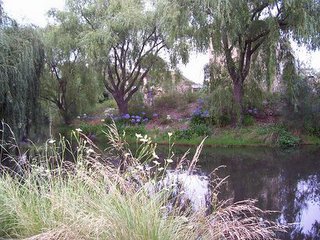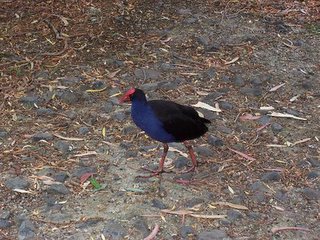The first thing to strike me about Australia was its relative aridity as compared to the parts of North America with which I am most familiar. Even from the air one can see the brownness of the grass below. Australia as a whole is fairly dry, with much of its interior – the famous outback – occupied by desert conditions. There is no lengthy river system, such as the Mississippi-Missouri, flowing through the heart of the country. As a consequence, the most fertile and arable parts of Australia lie in the southeastern corner, which, not incidentally, contains most of its 20 million people. This has political ramifications insofar as the two most populous states of New South Wales and Victoria tend to dominate the political process, much as Ontario and Québec do here in Canada.

The second thing to note about the country is the beauty of its natural environment. For most of my visit I stayed at Glenn College on the campus of La Trobe University near Melbourne. Although some of the conference participants thought the campus ugly, I found it to be an incomparably lovely setting. (Perhaps Australians are so spoilt by the beauty of their own country that anything only moderately beautiful seems ugly in comparison.) Indeed many, if not most, of the photographs I took were of the exotic (by southern Ontario standards) flora and fauna inhabiting the land. A small stream wends it way through part of the grounds, and I loved to walk along its banks between Glenn College and Union Hall, where much of the conference took place. My best photographs were taken here.

Every morning I was awoken by the loud laughing sound of the kookaburra and the screech of the cockatoo – sounds that most North Americans would tend to associate with the jungle. I didn't get close enough to either of these creatures to photograph it, but at one point, while I was walking by the stream, I found myself only a metre away from a purple swamphen, which can be seen at right. The most visible of the many birds in the vicinity are the magpies, which are said to have a lovely song, but which, if I did manage to hear it, I failed to connect with this species. Another common bird is a variety of crow whose cry resembles that of a duck.

My host, Ken Dickens, was kind enough to walk me to a corner of the campus where the local kangaroos tend to congregate shortly before dusk. Sure enough, there they were. We were able to get close enough for me to capture them on camera. Was one of them a mother carrying a joey in its pouch? I couldn't tell from this distance. Needless to say, a mother with offspring would not have welcomed a closer look from us. What about the famous koala? We didn't see any of these. I was told that koalas are rather reclusive and stay up in their trees, uttering a loud grunting sound similar to that of a pig. It would have been a treat to see a platypus, one of the most unusual mammals on earth, but we didn't.
In future posts I will be writing about the climate and the heavens above Australia, the people and their ways, and the political system. Incidentally, yesterday was Australia Day, commemorating the first European settlement of the country in 1788.
Next: Antipodean sojourn III: the skies and seasons.

No comments:
Post a Comment